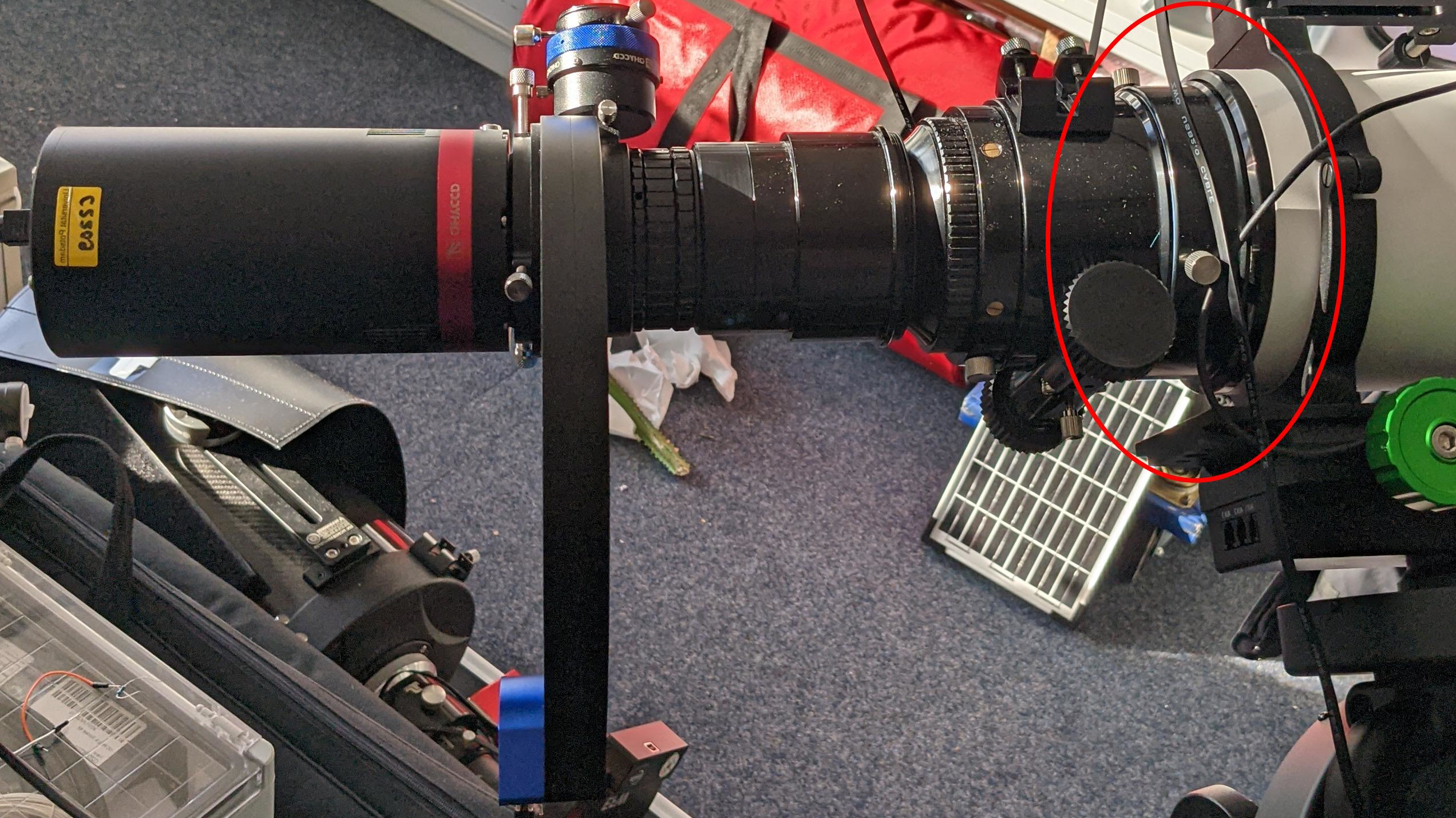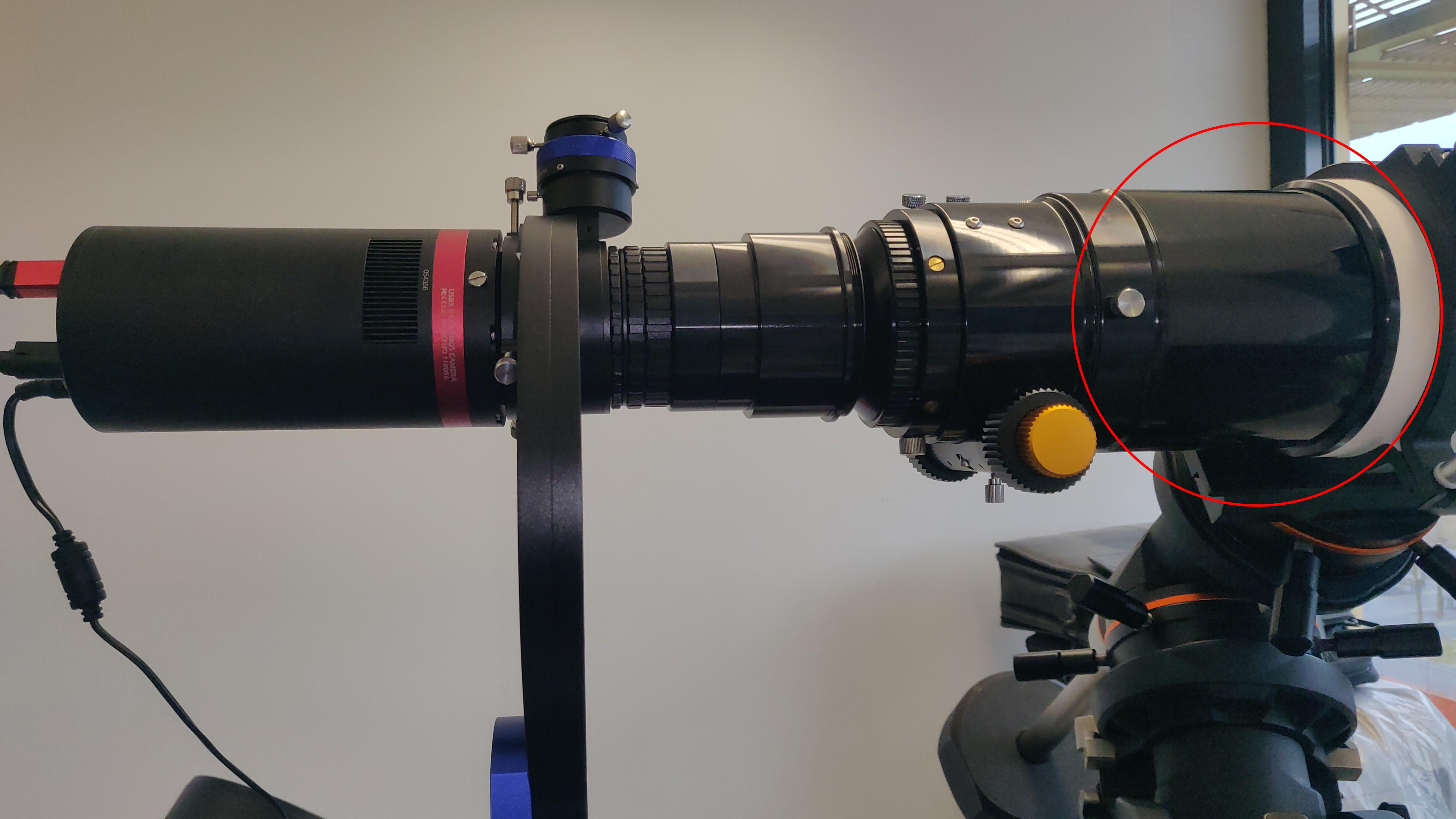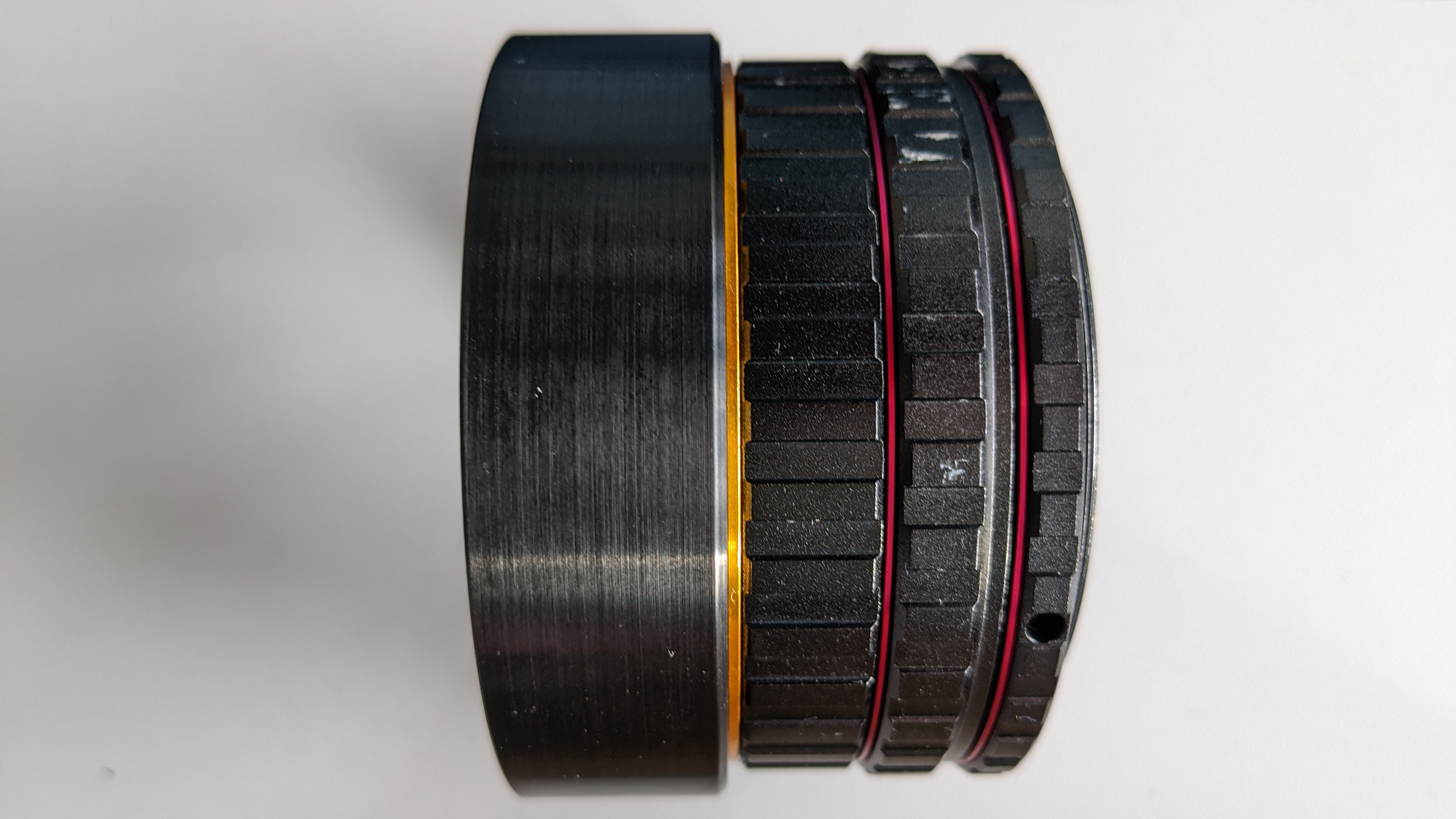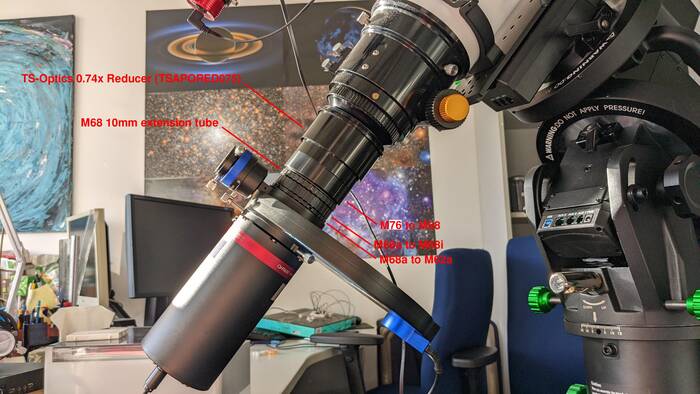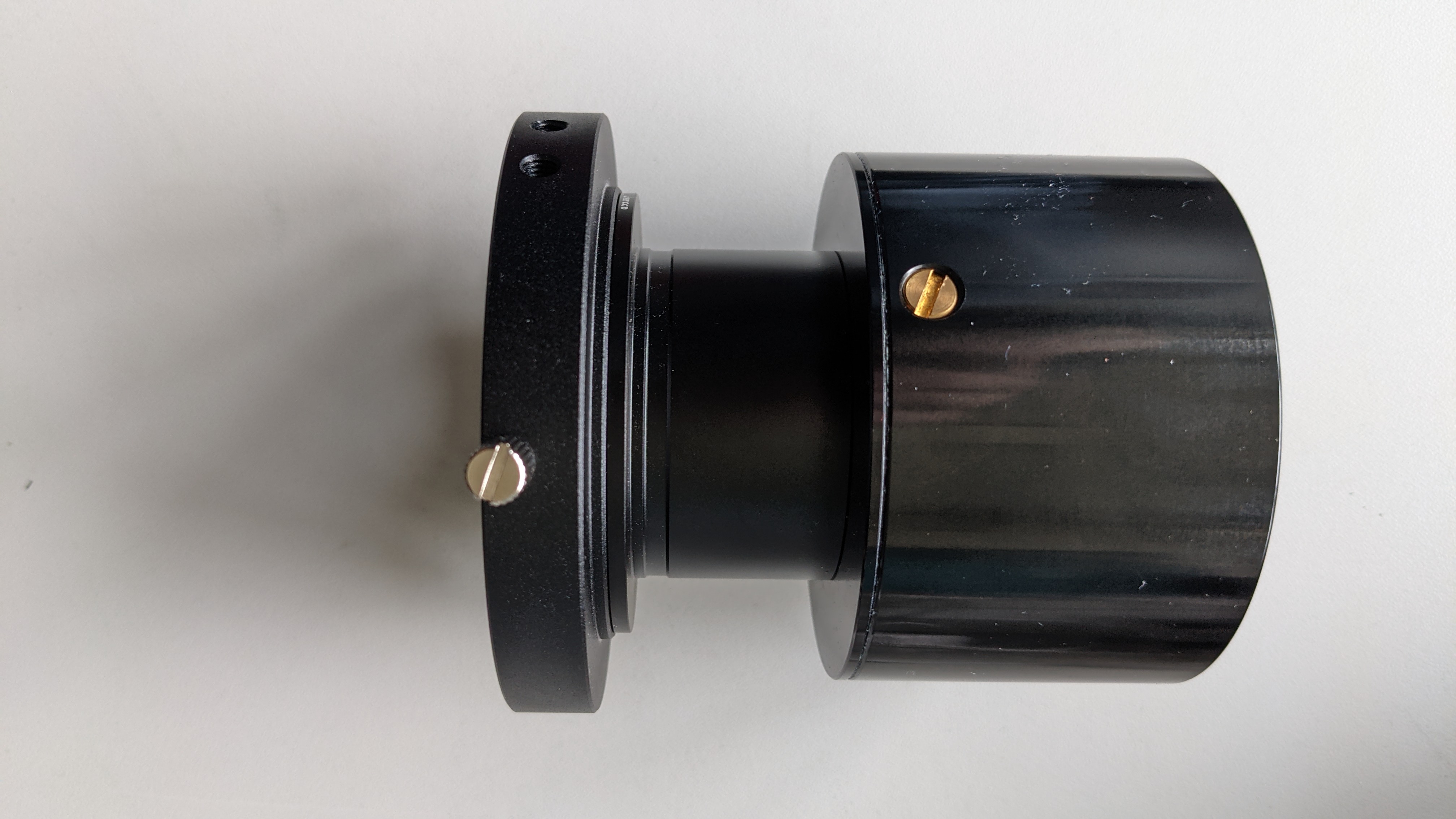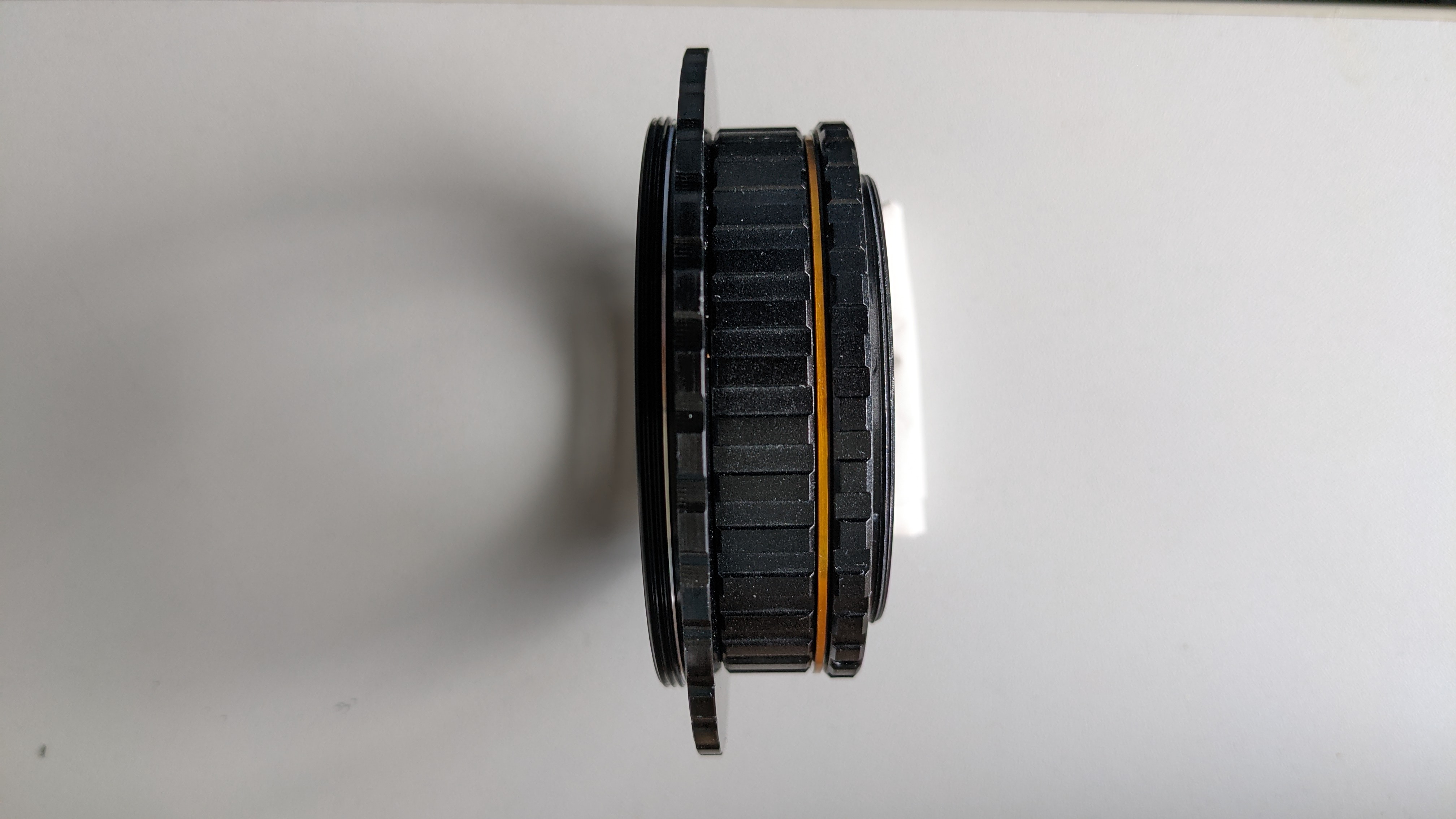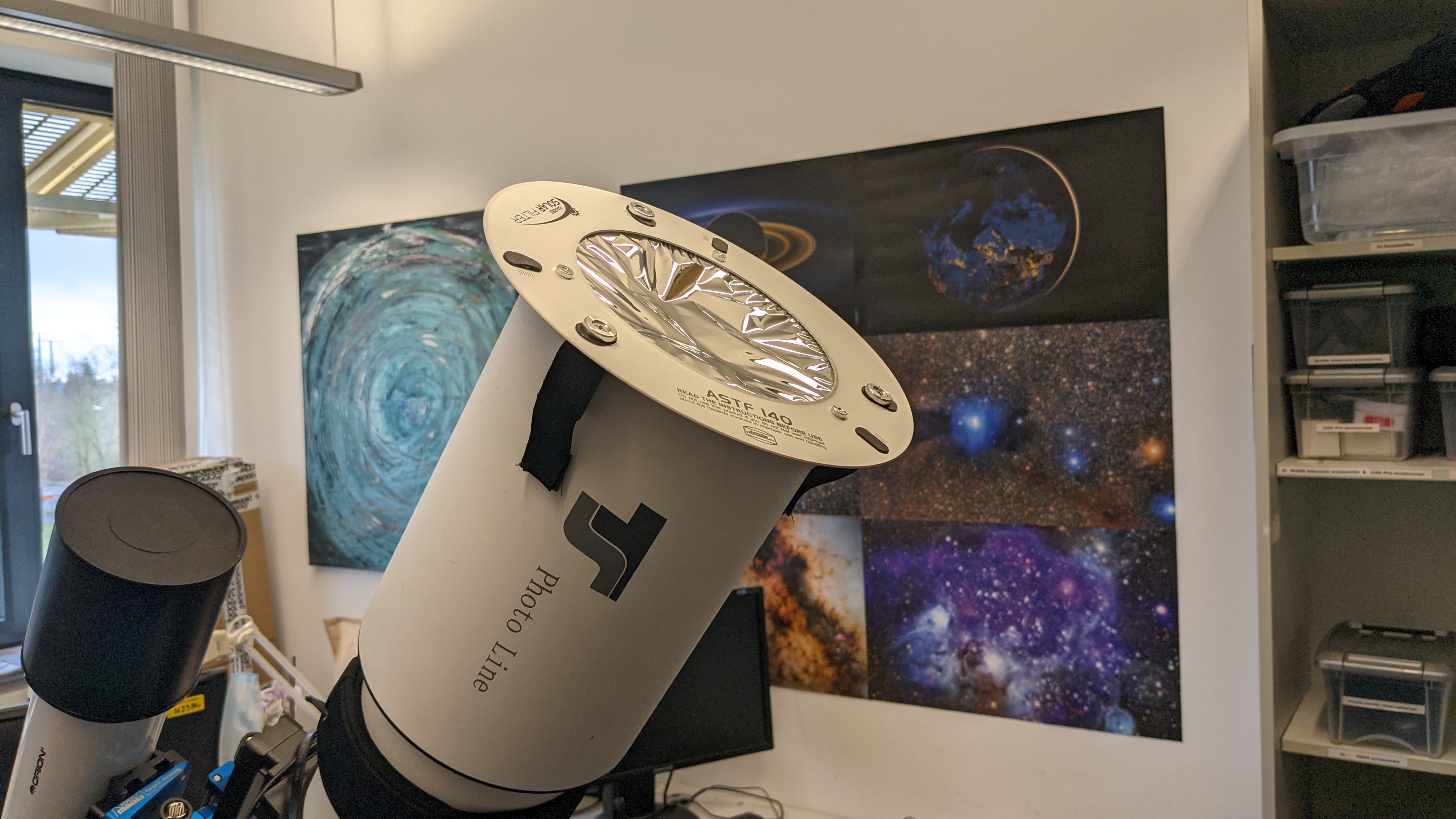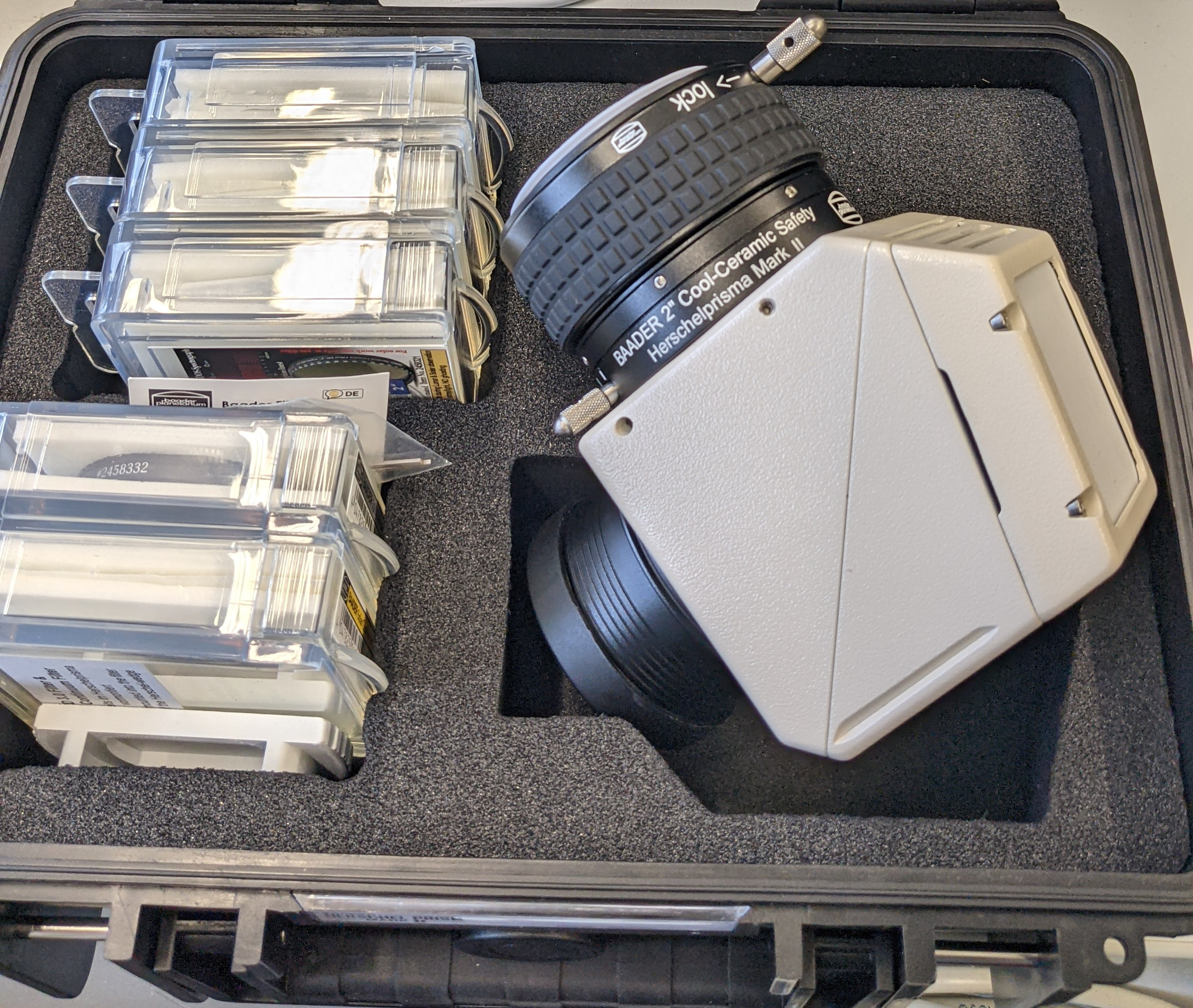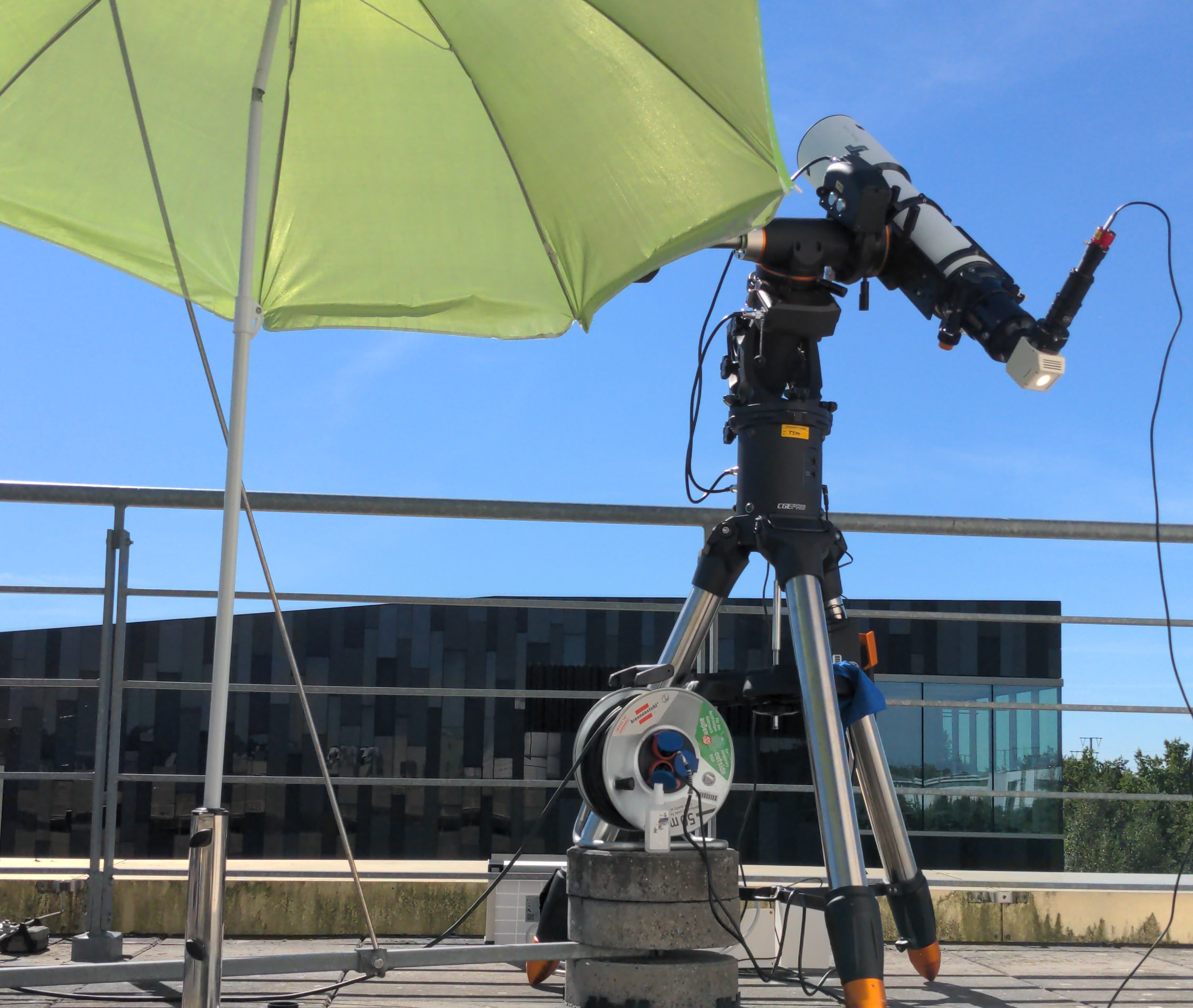This is an old revision of the document!

(remove this paragraph once the translation is finished)
130mm Apochromat from Telescope-Service
This page is still under construction… 
This page is about our TS-Optics-PHOTOLINE Apochromat. It has an aperture of 130mm and a focal length of 910mm. Consequently, the focal ratio is f/7 but can be reduced to f/5.2 with a reducer. It is equipped with a triplet air-spaced objective lens featuring an SFPL-53-ED glass element from Japan and a 3.7“ focuser.
Eyepiece-side connections:
- 1.25″
- 2″
- M68x1 internal thread
- M92x1 internal thread
Available Accessories:
Suitable Mounts:
Articles related to respective mounts are linked, their setup often described in combination with one of our other telescopes. However, the fundamental steps of assembling each mount are universal.
- Celestron CGX-L
- Sky-Watcher EQ8-R Pro
Working Distance:
- 123mm from the 2” eyepiece holder
- can be extended to 223mm
Configuration
0.74x Reducer
Reducer + QHY600M with Filter Wheel and Off-Axis Guider
This setup is the standard for deep-sky observations as it provides the widest field of view. The reducer used is the TS-Optics 0.74x Reducer with:
- camera side M48x0.75 external thread with 55mm working distance
- camera side M76x1 external thread with 105.7mm working distance
- telescope side M88x1 external thread and M82x1 internal thread
The reducer reduces the focal ratio to f/5.2. The “drawback” of this setup is that the extension tube between the tube and the focuser must be removed, otherwise, achieving focus becomes impossible. This process requires care as the threads are delicate. Refer to the following two images for comparison:
For this setup, the following adapters are required, to be mounted in the order as seen from the telescope:
The camera along with the filter wheel, filter, and off-axis guider has a back focus of 56mm. The working distance behind the M76 thread of the reducer is 105.7mm. Thus, a distance of 49.7mm needs to be bridged. Simultaneously, a translation from M76 to M62 thread is required. The former is achieved with an M76 to M68 adapter from TS Optics, a conversion adapter from M68a to M68i, and an adapter from M68a to M62a. These three adapters have an optical path length of 37.7mm. The remaining 12mm are bridged by a 10mm M68 extension and three M68 fine-tuning rings with a total optical path length of 2mm.
It is important to note that before mounting the above adapter combination, the long M48 adapter, usually present on the reducer, must be unscrewed to expose the M76 thread.
| Position | Adapter | Optical Path Length [mm] |
|---|---|---|
| 1 | TS Optics M76 → M68 Adapter | 20.7 |
| 2 | M68 Fine-Tuning Ring (golden) | 1 |
| 3 | M68a → M68i Conversion Ring | 12 |
| 4 | M68 Fine-Tuning Ring (red) | 0.5 |
| 5 | M68 10mm Extension | 10 |
| 6 | M68 Fine-Tuning Ring (red) | 0.5 |
| 7 | M68a → M62a Adapter | 5 |
Reducer + QHY600M with UFC Filter Holder
The same principles apply here as mentioned above, with the adapter combination being slightly different:
| Position | Adapter | Optical Path Length [mm] |
|---|---|---|
| 1 | TS Optics M76 → M68 Adapter | 20.7 |
| 2 | M68 7.5mm Extension | 7.5 |
| 3 | M68a → M68i Conversion Ring | 12 |
| 4 | UFC S70 / M68x1 | 1 |
| 5 | UFC Varilock | 15-20 |
| 6 | UFC Tilter | 9.75-10.5 |
| 7 | UFC Base | 13 |
| 8 | Camera Adapter M54 → Camera Clamp | 6 |
This adapter combination has an optical path length of 87.2 mm when the Varilock is set to 16.5-17.25 mm. This, combined with the QHY600M, which has a back focus of 17.5 mm, and the installed filters, results in a total working distance of 105.7 mm behind the M76 thread of the reducer.
QHY600M
The QHY600M can also be mounted on the APO without additional filter holders, filter wheels, etc. Only the QHY camera adapter with M54 internal thread and a 2“ eyepiece holder from QHY with M54 external thread on one side and M84 internal thread on the other side are necessary. The M48 thread then fits onto the M84 thread of the reducer.
| Position | Adapter | Optical Path Length [mm] |
|---|---|---|
| 1 | QHY Camera Adapter | 5 |
| 2 | 2” Eyepiece Holder | 33 |
Together with the 17.5 mm back focus of the camera, this achieves the required working distance from the M48 of the reducer of 55±1 mm.
Flattener
Flattener + QHY600M with Filter Wheel and Off-Axis Guider
The Flattener is also from TS-Optics and maintains the focal length unchanged:
- Camera side M48x0.75 external thread with 55mm working distance
- Camera side M54x0.75 internal thread with 62.5mm working distance
- Camera side M78x1 internal thread with 77.5mm working distance
- Telescope side M92x1 external thread
| Position | Adapter | Optical Path Length [mm] |
|---|---|---|
| 1 | TS Optics M78a → M68a Adapter | 3.3 |
| 2 | M68a → M68i Conversion Ring | 12 |
| 3 | M68 Fine-Tuning Ring (golden) | 1 |
| 4 | M68 Fine-Tuning Ring (black), optional | 0.3 |
| 5 | M68a → M62a Adapter | 5 |
As mentioned earlier, the working distance from the M78 thread is 77.5mm, with the camera along with the filter wheel, filter, and off-axis guider having a back focus of 56mm. The remaining 21.5mm are bridged by the above adapter combination.
Flattener + QHY600M with UFC Filter Holder
| Position | Adapter | Optical Path Length [mm] |
|---|---|---|
| 1 | TS Optics M78a → M68a Adapter | 3.3 |
| 2 | M68 Fine-Tuning Ring (golden) | 1 |
| 3 | M68 10mm Extension | 10 |
| 4 | M68 Fine-Tuning Ring (golden) | 1 |
| 5 | M68 Fine-Tuning Ring (red), optional | 0.5 |
| 6 | M68a → M68i Conversion Ring | 12 |
| 7 | M68 Fine-Tuning Ring (golden) | 1 |
| 8 | M68 Fine-Tuning Ring (black), optional | 0.3 |
| 9 | UFC S70 / M68x1 | 1 |
| 10 | UFC Tilter | 9.75-10.5 |
| 11 | UFC Base | 13 |
| 12 | Camera Adapter M54 → Camera Clamp | 6 |
Together, this results in an optical path length of approximately 58.8 mm depending on the tilter position and installed fine-tuning rings. Combined with the 17.5 mm back focus of the QHY600M and the installed filter, this leads to 77.5 mm from the M78 thread.
Solar Observations
Solar Filter
A tension-free mounted solar filter for visual observations from Baader Planetarium is used. This filter is simply mounted in front of the objective. Any eyepiece and camera can then be used. However, the Herschel prism described below usually allows for better imaging quality.
Herschel Prism
We also have a Herschel Prism Mark II from Baader Planetarium, which allows us to observe the sun in white light with excellent quality. The Herschel prism can be equipped with different filters, allowing it to be configured for visual observations as well as camera observations with very short exposure times. Details about the Herschel prism and its operation can be found in the associated article.
The Herschel prism can be used in many different configurations, for example, with and without a Barlow lens. However, the standard procedure is to insert it directly into the 2“ eyepiece clamp of the APO.
Different models can also be used on the camera side. The prism has a 2” eyepiece clamp for holding corresponding accessories.

